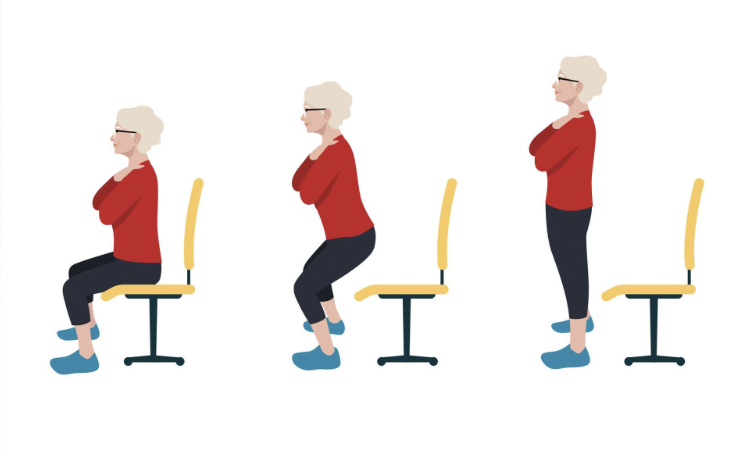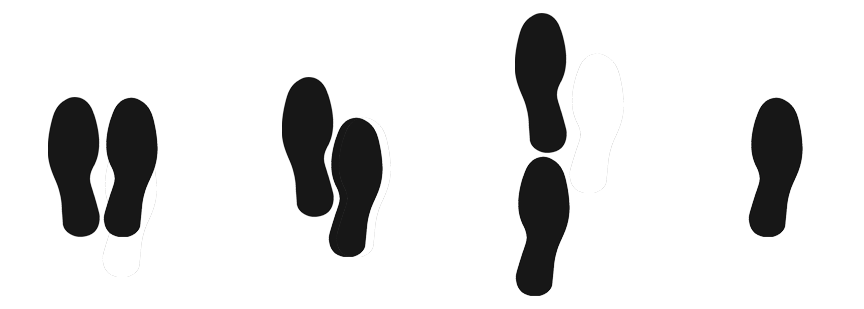
Timed Up and Go (TUG)
Purpose: To assess mobility
Equipment: A stopwatch
Directions:
- Patients wear their regular footwear and can use a walking aid, if needed.
- Begin by having the patient sit back in a standard arm chair and identify a line 3 meters, or 10 feet away, on the floor.
- When I say “Go,” I want you to:
1. Stand up from the chair.
2. Walk to the line on the floor at your normal pace.
3. Turn.
4. Walk back to the chair at your normal pace.
5. Sit down again. - On the word “Go,” begin timing.
- Stop timing after patient sits back down.
- Record time.
An older adult who takes >12 seconds to complete the TUG is at risk for falling.
Click HERE for a handout from the CDC

30 Second Chair Stand
Purpose: To test leg strength and endurance
Equipment: A chair with a straight back without arm rests (seat 17” high), and a stopwatch.
Directions:
- Instruct the patient:
1. Sit in the middle of the chair.
2. Place your hands on the opposite shoulder crossed, at the wrists.
3. Keep your feet flat on the floor.
4. Keep your back straight, and keep your arms against your chest.
5. On “Go,” rise to a full standing position, then sit back down again.
6. Repeat this for 30 seconds. - On the word “Go,” begin timing
- If the patient must use his/her arms to stand, stop the test.
- Record “0” for the number and score.
- Count the number of times the patient comes to a full standing position in 30 seconds.
- If the patient is over halfway to a standing position when 30 seconds have elapsed, count it as a stand.
- Record the number of times the patient stands in 30 seconds.
Click HERE for a handout from the CDC, which includes normative scoring.

4 Stage Balance Test (4SBT)
Purpose: To assess static balance
Equipment: A stopwatch
Directions:
- There are four standing positions that get progressively harder to maintain.
- You should describe and demonstrate each position to the patient.
- Then, stand next to the patient, hold their arm, and help them assume the correct position.
- When the patient is steady, let go, and time how long they can maintain the position, but remain ready to assist the patient if they should lose their balance.
- If the patient can hold a position for 10 seconds without moving their feet or needing support, go on to the next position.
- If not, STOP the test.
- Patients should not use an assistive device (cane or walker) and they should keep their eyes open.
An older adult who cannot hold the tandem stand for at least 10
seconds is at increased risk of falling.
Click HERE for a handout from the CDC, which includes the 4 balance positions for testing.
